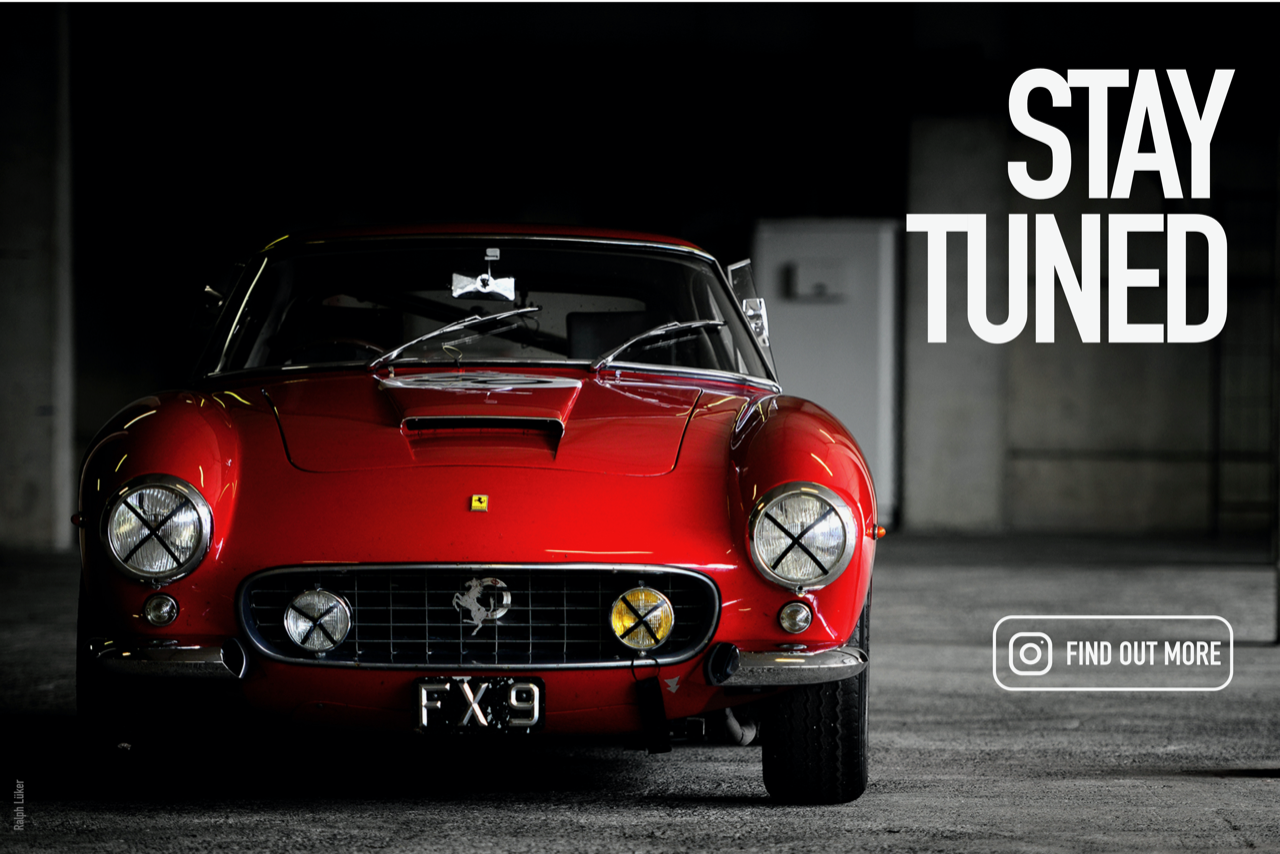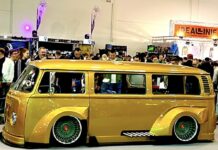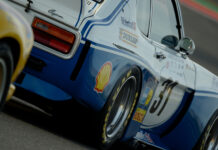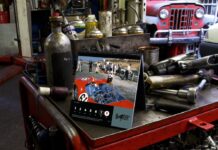Did your parents have the coolest car on the block when you were a kid? We don’t mean a ’60s station wagon, which might spark conversations at car cruises today. We’re talking about a car that, in 1970, when you were just seven years old, made your friends envious. Bob Allen Jr. can say yes. His parents, Bob and Norma Jean Allen, traded a 1967 Ford Country Squire to get a muscle car when many young parents were doing just the opposite.
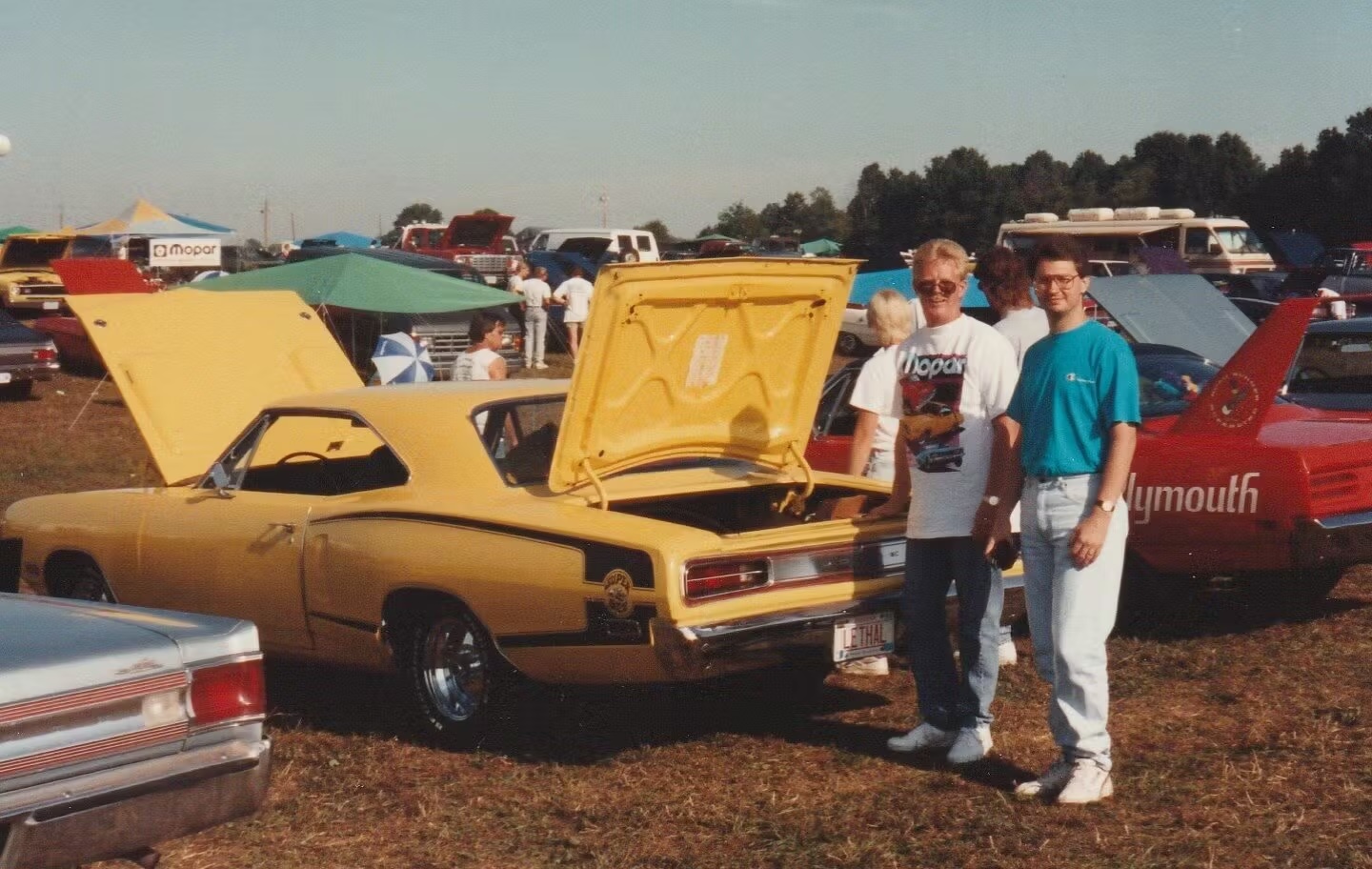
“Our dad went to Capitol Dodge—long gone but located near 38th Street and Lafayette Road in Indianapolis—to buy a new 1970 Challenger, but the salesman talked him into the Super Bee instead,” Bob Allen Jr. said. “It was sitting on the dealer’s lot. Dad decided on the Super Bee because of the additional backseat room needed for my sister and me. He still has the car.”
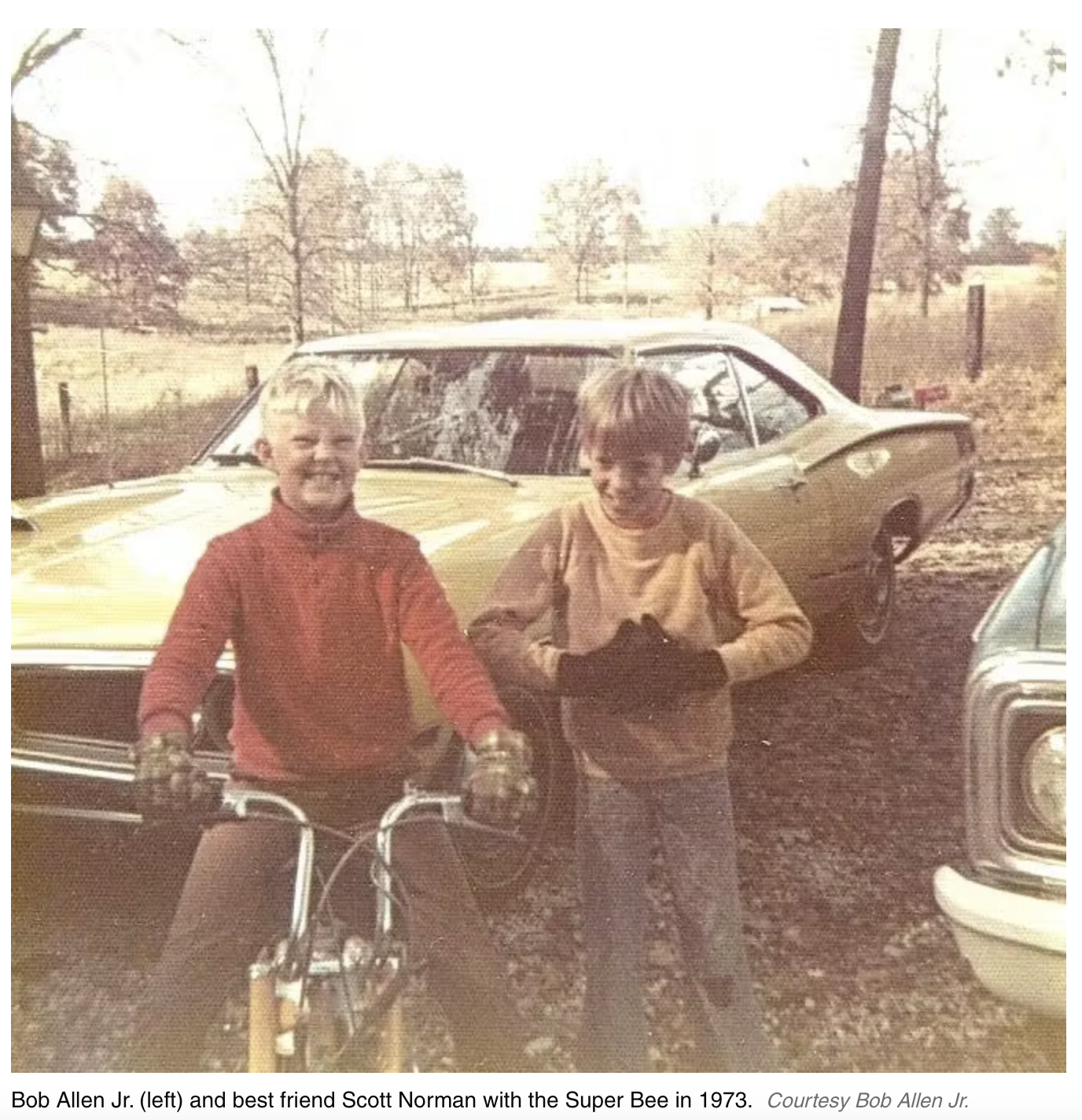
The Super Bee he chose, painted FY1 Top Banana, was optioned with the four-speed gearbox operated by that famous long-neck pistol-grip shifter, which worked a Hurst linkage. Power came from the standard 383 Magnum, the same B-series big-block V-8 used in the Super Bee’s more popular corporate sibling, the Plymouth Road Runner.
“The Super Bee was our family car and driven year-round in Indiana,” said Bob Jr. “Our mom took us everywhere in a big-block, four-speed Dodge. The bag boys at the grocery especially enjoyed helping us to the car to get a look. My sister, Nancy, reminded me that our cousins called it the banana car.”
Bob Allen Sr., now 84, still drives the Super Bee in good weather and enjoys seeing people give a thumbs-up as he passes by. Bob Jr. takes an occasional drive in the Super Bee, too. He works as a computer programmer for Rolls-Royce North America—the jet-engine manufacturer, not the automaker. (The two split a long time ago but share the famous name and trademark.)
“The Dodge now has 97,000 miles, and it’s got a license plate that says KEPT IT,” says Bob Jr. “The original engine has been rebuilt and bored 0.040 inches over, but it has never been damaged. The original radiator was re-cored. Almost all the exterior paint and interior are original. The car is not perfect. It’s got some small dents and scratches here and there.”
This Super Bee almost got away once but returned to the family after a stint in protected storage. For the past 40 years, it has been garaged, covered, and pampered but still driven and enjoyed.
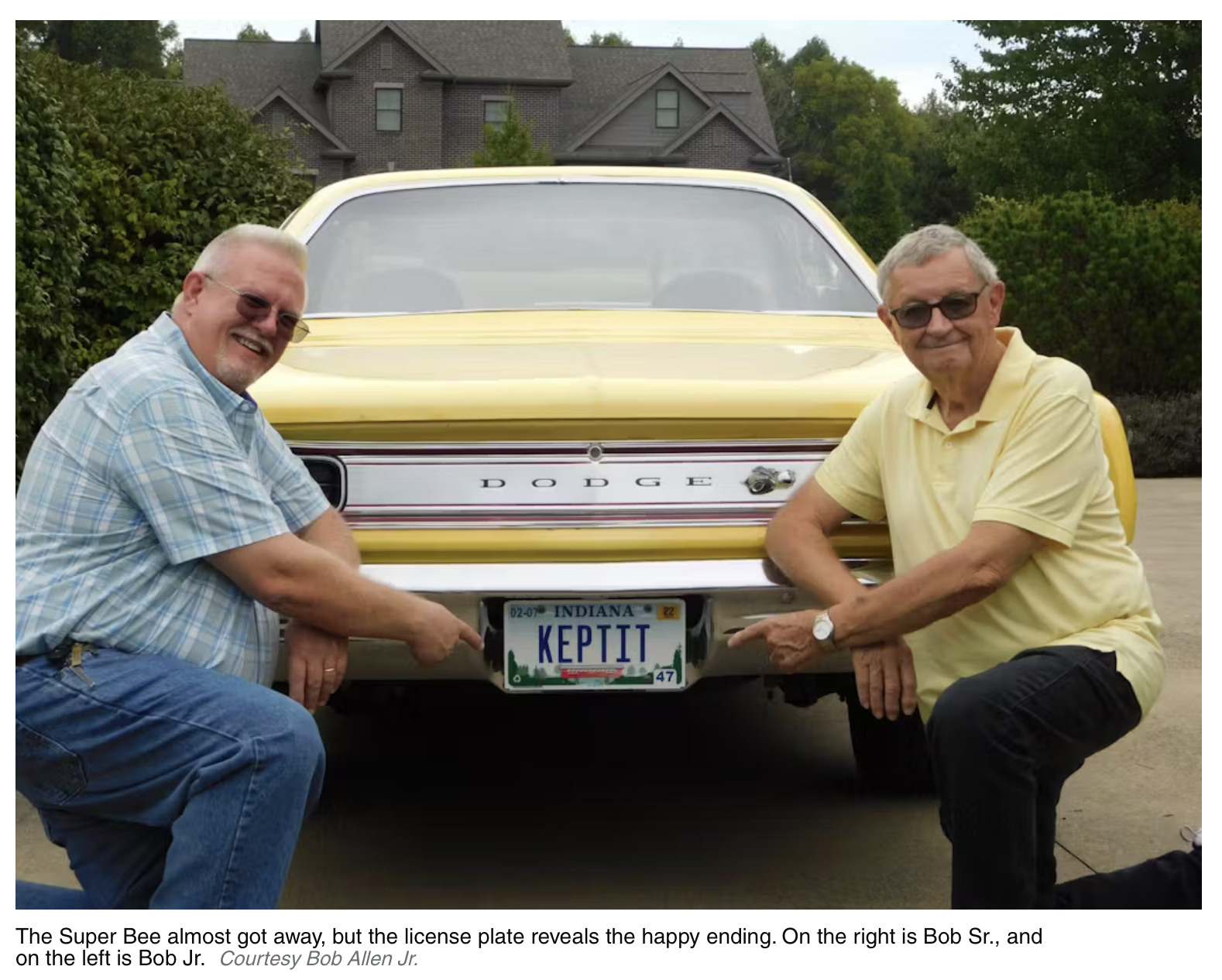
Factory Basics: 1970 Dodge Super Bee
Chrysler Corporation’s new-for-1967 Dodge Coronet R/T and Plymouth GTX muscle coupes provided stellar performance thanks to a standard 375-horsepower 440 cu-in RB-series V-8 or optional 426 Hemi. At around $3400 to start, the Mopars cost a few hundred dollars more than some competitors and, in terms of volume, the Pontiac GTO and Chevelle SS 396 dusted both cars.
The solution arrived in 1968, with Plymouth introducing a second, less expensive performance model, based on the Belvedere and called the Road Runner. Dodge joined in with the Coronet-based Super Bee, its name a play on its “B” body code.
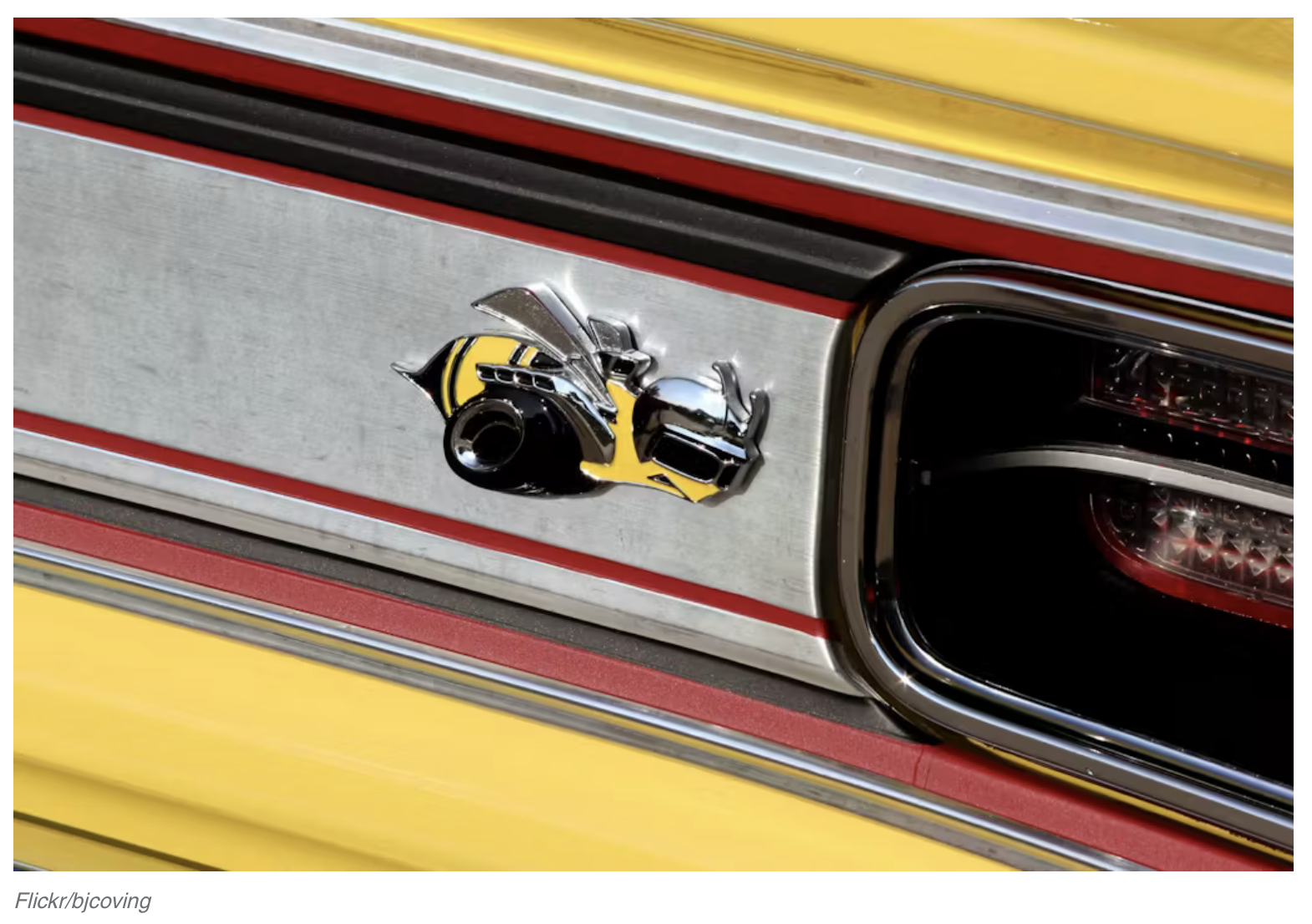
The mechanical package, the same for both cars, was exemplary. The heart was a hotter version of the Chrysler 383 cu.-in. B-series V-8. It had a single Carter AVS four-barrel carburetor with the same basic manifold design as the 440 Magnum. The 440 engine also donated its camshaft and heads with 2.02-inch intake and 1.74-inch exhaust valves. An open-element air cleaner and dual exhaust system further aided breathing.
Internals were strong, with a drop-forged crank and rods. Dodge and Plymouth rated this 383 at 335 horsepower at 5200 rpm and 425 lb-ft. of torque at 3400 rpm (SAE gross figures). Compare that to the GTO’s standard 400 cu.-in V-8 with 350 hp and the Chevelle SS 396’s standard 325 hp.
Both the Road Runner and Super Bee came with a three-speed manual transmission. Dodge charged extra for the four-speed stick or three-speed TorqueFlite automatic. Both also had heavy-duty suspension and brakes, though the latter were unassisted drums all around. Power-assist cost extra, and adding front discs was another option on top of that. The F70-14 wide-tread tires on steel wheels, comically small by modern standards, easily spun into big, smoky burnouts.
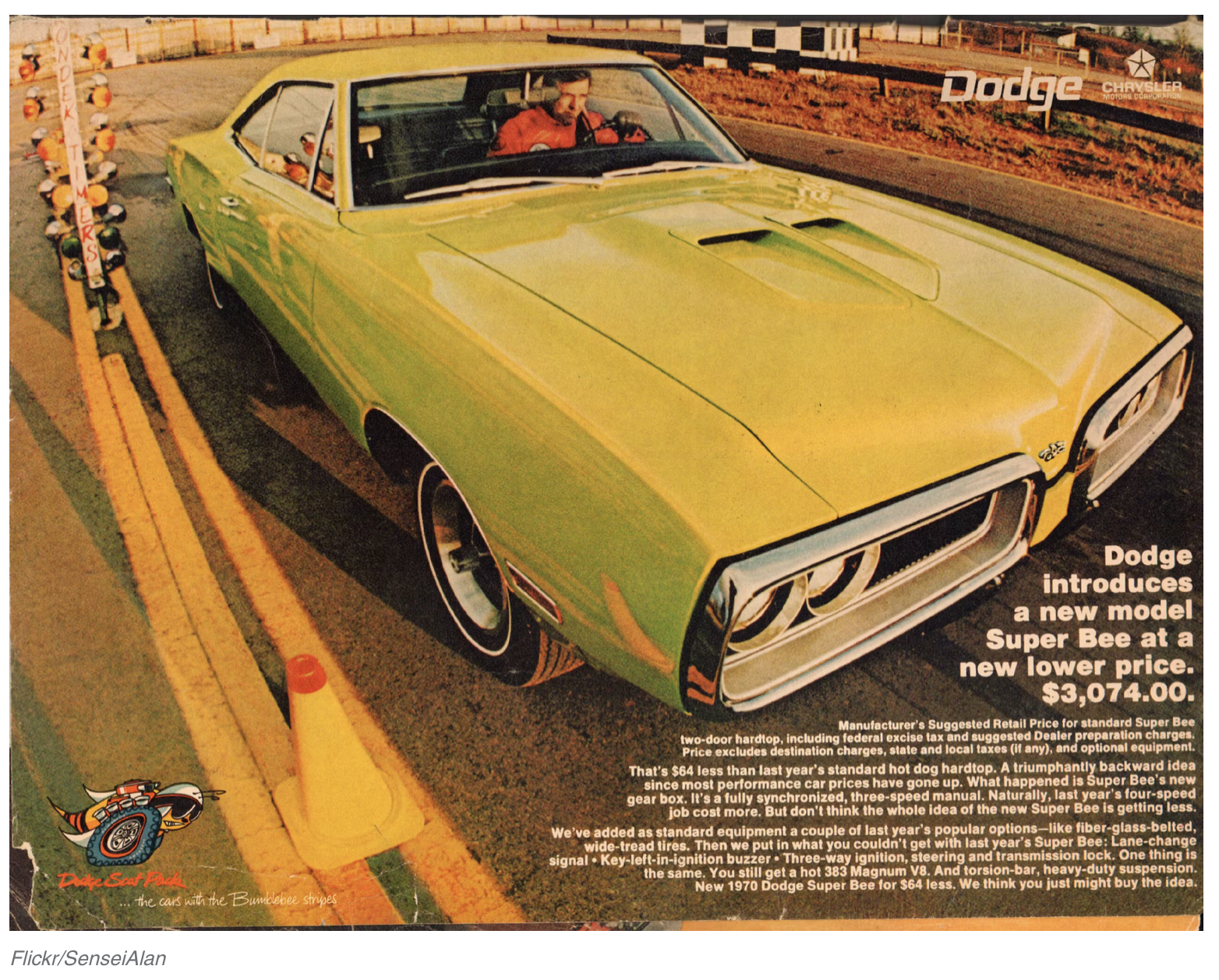
In the hands of the staff of Car Craft magazine, a ’68 Super Bee equipped like Bob Allen’s ’70 model (four-speed with 3.23:1 axle ratio) covered the quarter mile in 14.87 seconds at 96.25 mph. Hot Rod magazine sampled the ’68 Road Runner with the four-speed and 3.55:1 rear and got 14.74 seconds at 98 mph. Both the Road Runner and Super Bee offered the optional Hemi rated at 425 hp. The 390-horse 440 Six Pack became a third option in mid-1969 in the special A12 street-racer package and then as a standalone option for 1970.
Not So Fast Out of the Showroom
The Super Bee gave the same performance as the Road Runner for about the same price. Yet, the Bee sold just 51,000 for 1968 through 1970 while the Road Runner blew past with about 164,000 for the same period, including 1935 big-wing Super Birds. There were two big reasons for the disparity.
Plymouth had licensed the Road Runner cartoon character from Warner Bros., even using the speedy cartoon bird’s signature “Beep! Beep!” expression as the car’s horn sound. It was a brilliant marketing scheme that resonated with the public and target buyers. Many had grown up watching that popular cartoon that started in the late 1940s. As the cartoon’s hapless would-be predator Wile E. Coyote might have said, “Super genius!” The Super Bee’s made-up bee logo, meanwhile, had no such relatable reference.
The second reason for the Super Bee’s subdued sales was another car in the same showroom: the second-generation Charger, which also debuted for 1968. Its knockout body looked fast regardless of the powertrain. Many Chargers had just the base 318 V-8, but the full roster of other B-body performance options were available.
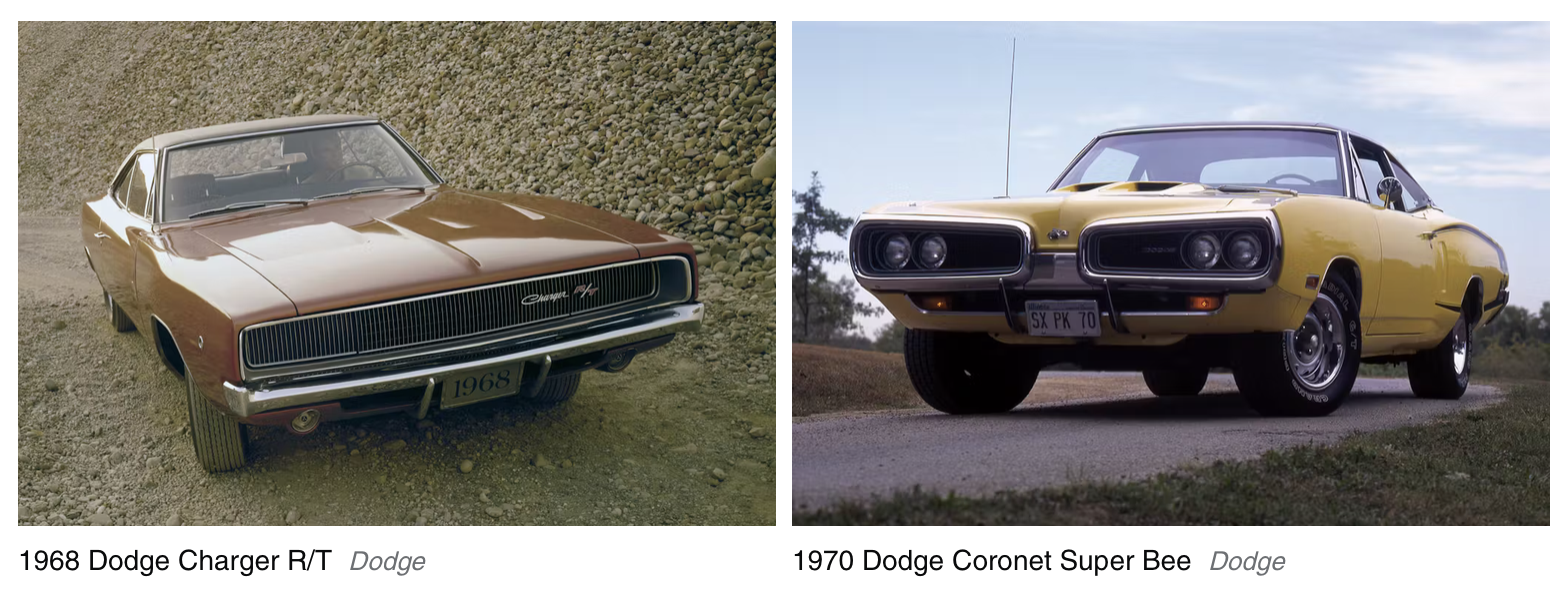
Although a Charger R/T was nearly $500 more than a base Super Bee, buyers found its blade-sharp design, 440 Magnum, and upscale interior detailing worth the upcharge. Out of more than 232,000 Chargers made from 1968 through 1970, nearly 50,000 were R/Ts, nearly matching total Super Bee production for those three years.
With the Coronet strictly a four-door sedan for 1971, Dodge moved the Super Bee name to the Charger body but built just around 5000. Both it and the even slower-selling R/T were gone after that.
That Great Affordable Mopar Speed
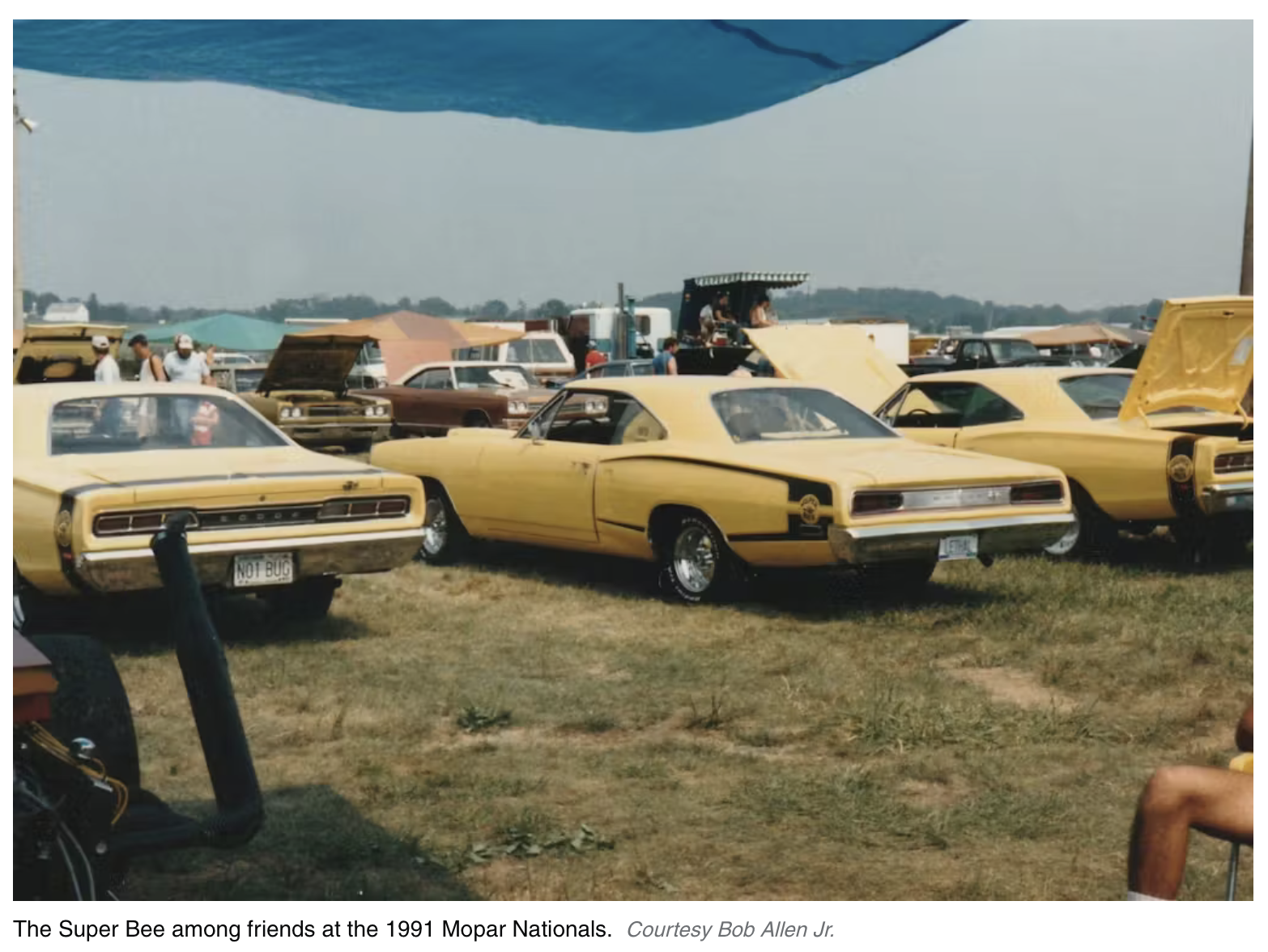
Bob Jr. said the car’s original sales documentation has been lost to time. “We had one of the original build sheets that came from under the back seat, but none of us can find it. We would display it with the photo book at car shows. The only thing I can figure is somebody took that out and walked off with it. Today we would never think of leaving something like that out, but back in the ’80s we didn’t think about stuff like that. Most people didn’t even know what it was or if it was of any value.”
Based on the options he mentioned, we estimated this Super Bee’s original retail price at a little over $3700 plus delivery and tax:
- 1970 Super Bee hardtop: $3074
- Four-speed manual transmission: $197.25
- Ramcharger hood: $73.30
- Hood hold-down pins: $15.40
- Power-assisted brakes: $42.95
- Power steering: $94.85
- Bucket seats: $100.85
- Full console: $54.45
- AM radio: $61.50
- Rear speaker: $15.15
Pricing for the dealer-added Ziebart rust-preventive and undercoating was not known, but Bob Jr. credits that option with saving the Super Bee from the salt used on Indiana roads in winter storms. “Now they brine the roads before it snows. It’s not as bad, but when I was a kid, it was all rock salt on the roads, and the cars did rust.”
High-Speed Hijinks
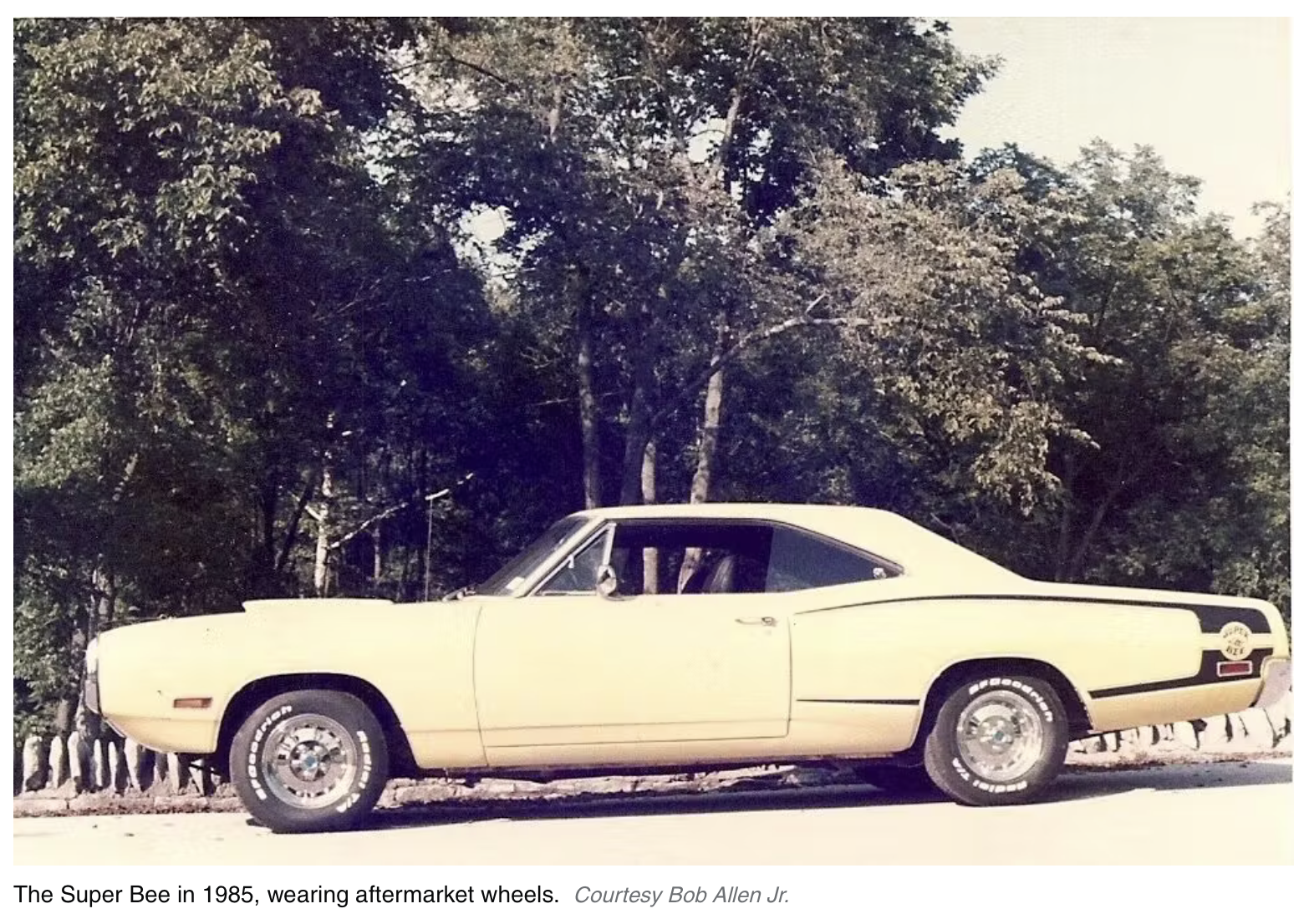
Memories from Bob Sr. included two quality lapses from the start. “My dad reminded me that on the drive home from the dealership right after buying the car, a bolt holding the alternator backed out, the alternator fell into the fan, and the fan threw the alternator into the radiator,” Bob Jr. said.
A high-rpm miss apparently vexed the dealer service department for a while. An exasperated Bob Sr. reached the point of writing a complaint letter to a Dodge executive.
“Then he got a call from the dealership,” remembered Bob Jr. “After they’d worked on the engine some more and said it was fixed, my dad asked for a test drive with the mechanic. The mechanic took it on a high-speed blast through third with no miss, and that convinced Dad it was fixed.”
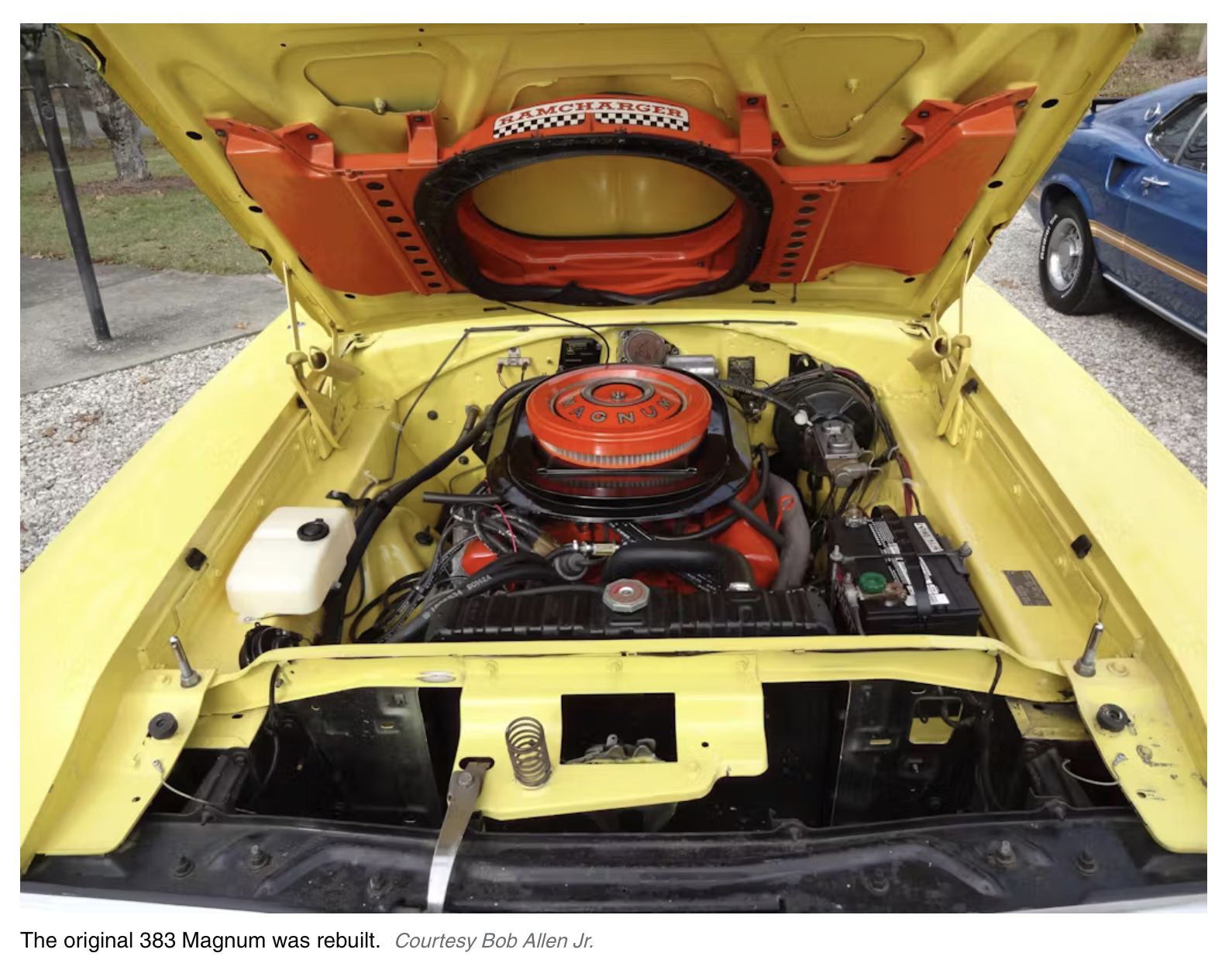
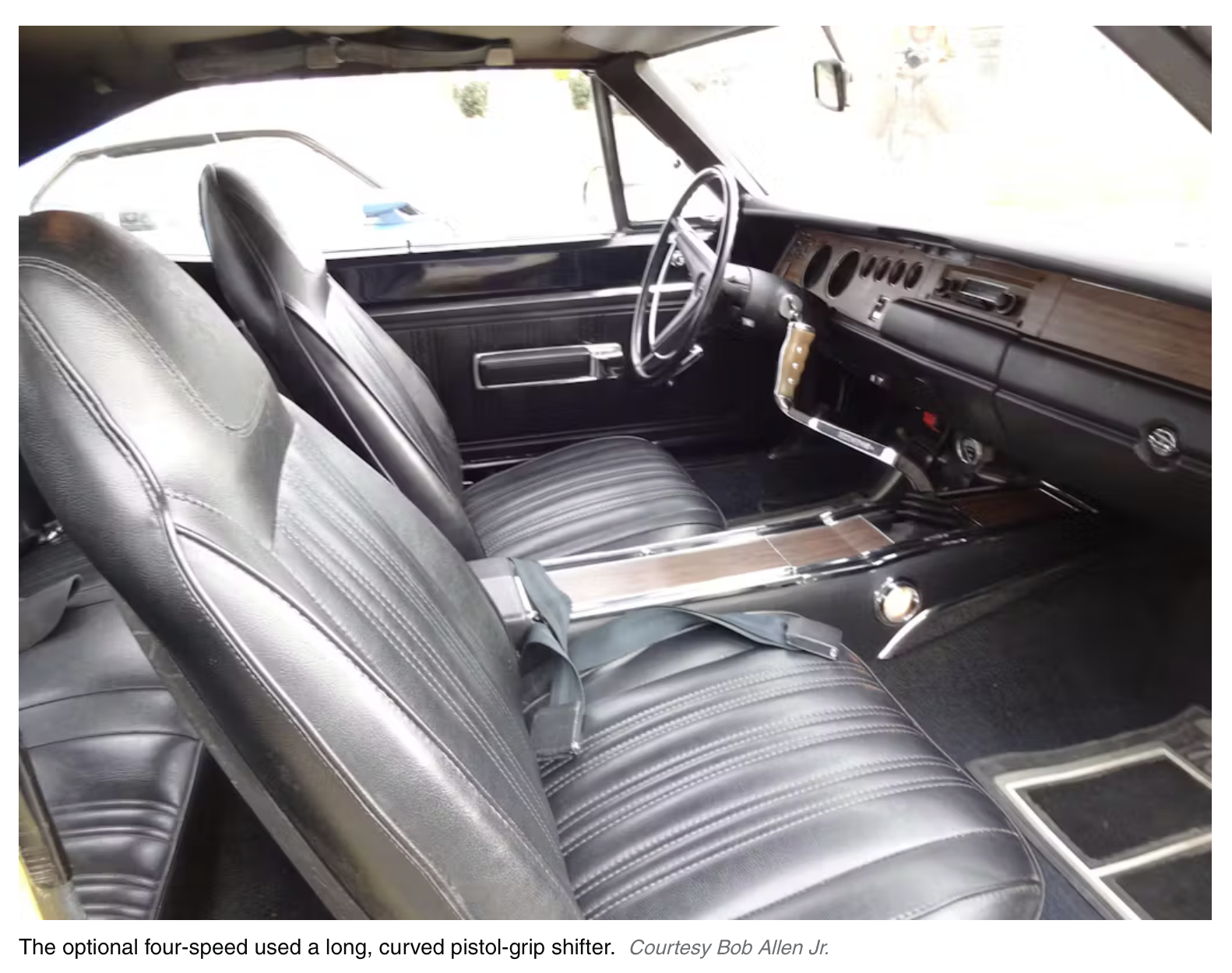
That was not the Super Bee’s only high-speed adventure. Bob Jr. recalled a drive where his dad took a challenge from another car on a four-lane divided highway. His memory had the car hitting the speedometer’s 140-mph mark. Performance stats from the day suggest 130 was possible, especially if the driver pushed the 383 past 6000 rpm. Those old speedos could also be off by as much as 10 percent.
“That was the first time I’d ever gone that fast in a car,” he recalled.
The Super Bee Almost Got Away
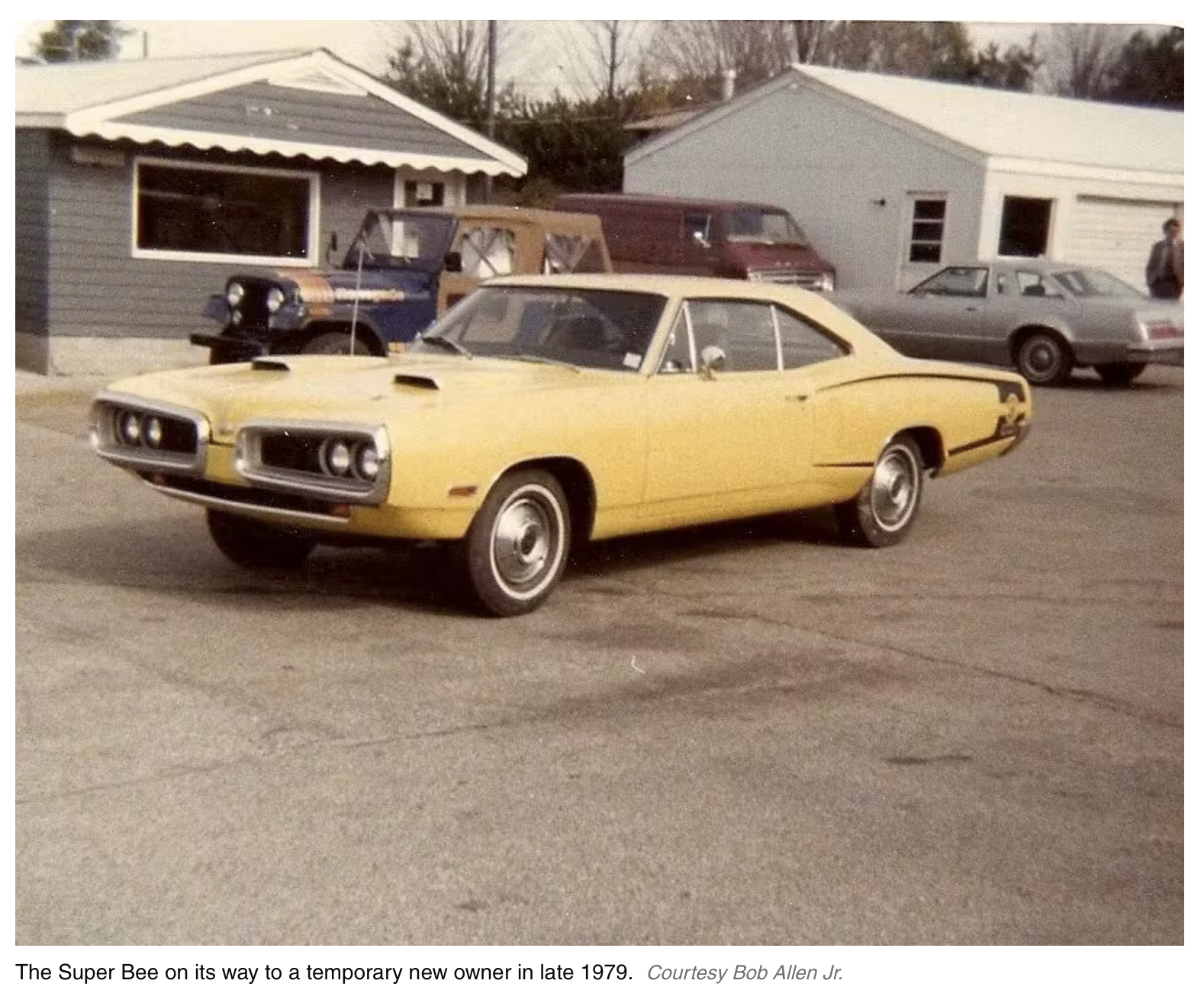
Like many people driving gas guzzlers in the late 1970s, Bob’s parents felt the bite of higher gas prices. In 1979, they bought a more fuel-efficient sedan and sold the Super Bee to a used car dealer who also had a collection of special cars.
“That guy just stuck it in the garage with all the other cars he had,” said Bob Jr. “My dad did not intend to buy the car back, but in 1985 he found the man still had it. He gave him a price, and my dad called me. I told him, ‘Do it!’ The guy made quite a bit of profit, though that was back before prices got ridiculous. My dad was OK with it. The car had just 500 more miles and looked just like the day we dropped it off six years before.
“The man never transferred the title, so my dad’s name is the only one that’s ever been on the title.”
Super Bee Memories
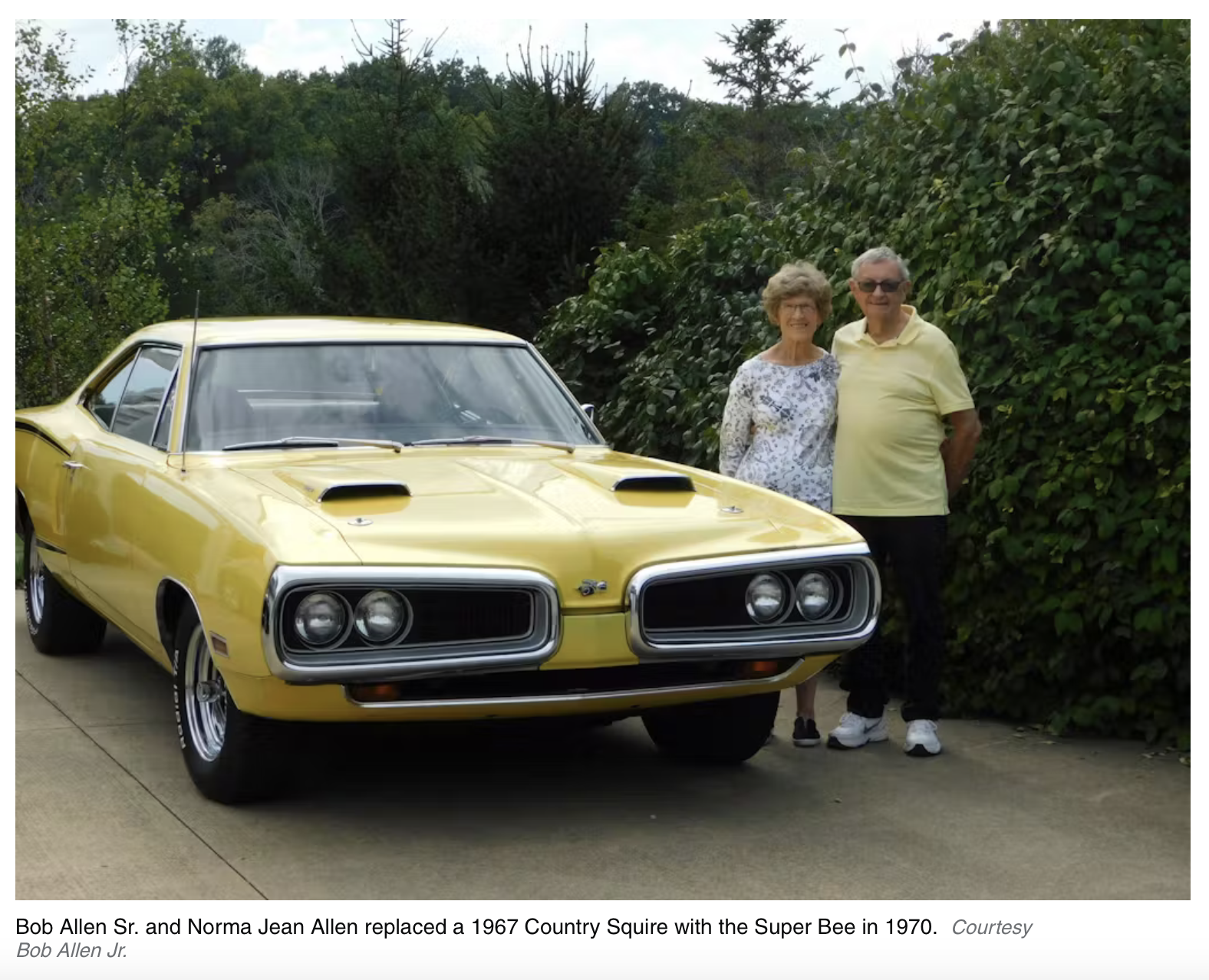
Hagerty: Did you drive the Super Bee?
Allen: I sure did. My sister, Nancy, remembered riding in the back when our dad was teaching me to drive it. Anyone familiar with the pistol grip shifters in those cars can tell you that they are not always the easiest things to shift. They sure look great, though! Ours had always been tricky to shift from first to second quickly, and our mom usually just went from first to third. The engine had enough torque that it worked just fine. Shifts from second to third are no problem and could be done quickly enough to break the tires loose.
Hagerty: Aside from that alternator incident and ignition miss, do you remember any other quality issues?
Allen: When we went through car washes, we had to hold towels along the tops of the windows because the water would leak past the seals.
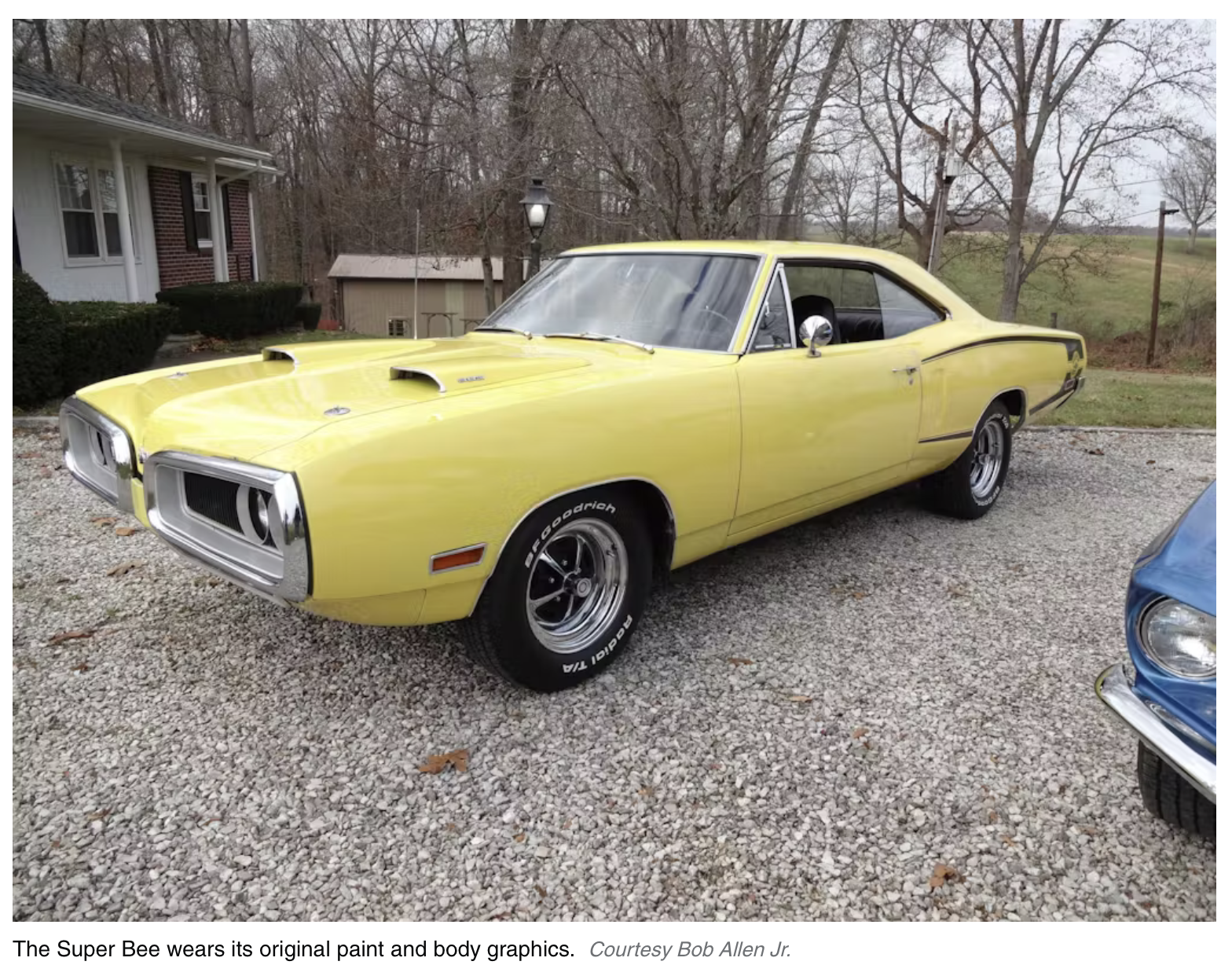
Hagerty: Were there ever any modifications from stock?
The car originally came with 14-inch wheels with the wheel covers, which we still have in storage. The 15-inch Magnum 500-style wheels were added after Dad bought the car back 40 years ago. At one point there was a trailer hitch on the back, because my dad had to borrow a small horse trailer to move a pony. It was used just that one time.
Hagerty: Aside from the Super Bee’s performance, did anything else stand out for you?
Allen: Nancy reminded me of how we would spend time cleaning the rocker panels with tar remover after picking up debris from road repairs. She also mentioned that we had an aftermarket 8-track tape player mounted under the dash and remembers listening to Gordon Lightfoot. Our car has only ever had its factory-original speakers, one on top of the dash, and one in the rear package tray.
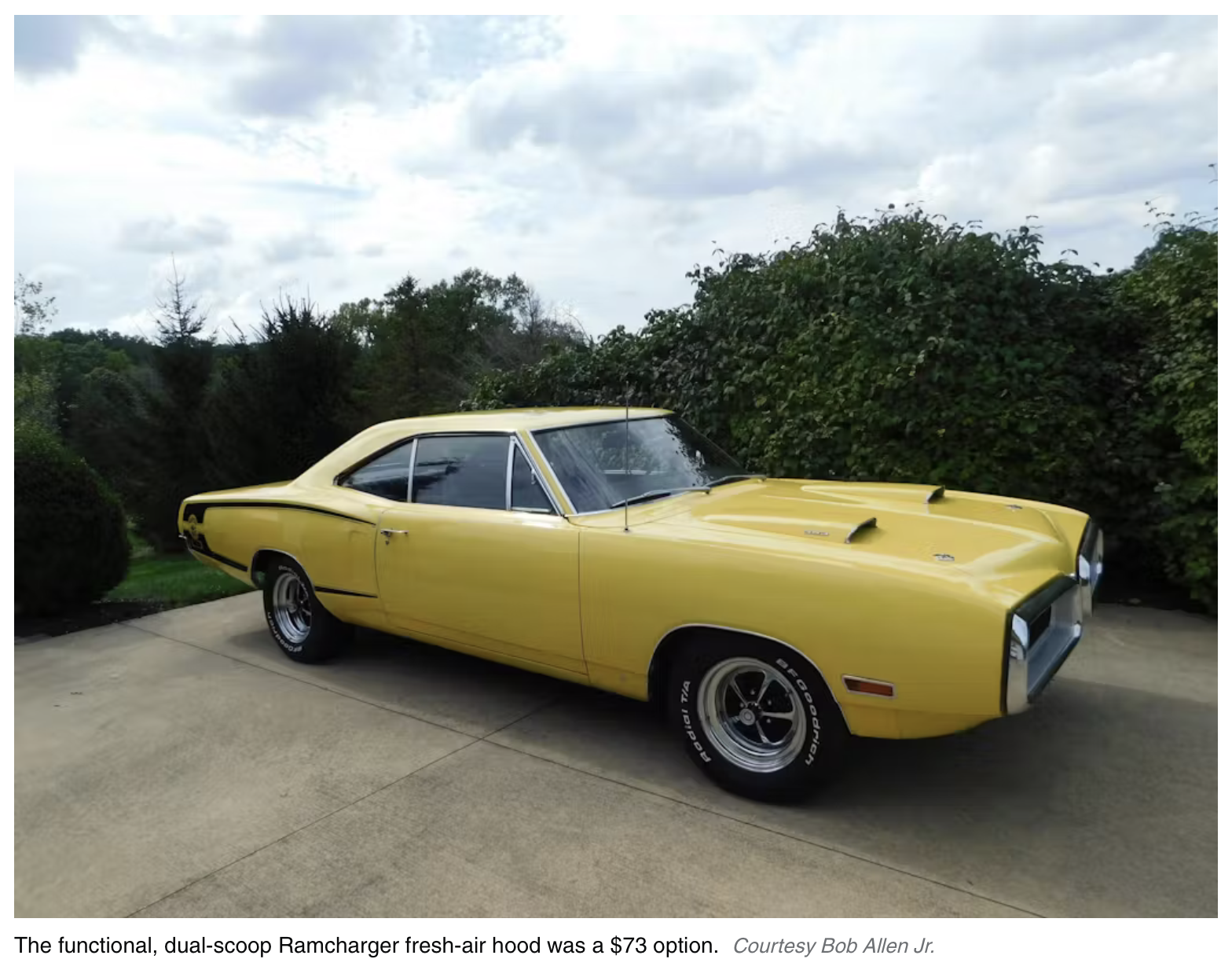
Hagerty: Were there any memorable road trips?
Allen: When we were older and had the car back, my sister, her husband, our dad, and I would be all smiles leaving early in the morning for our annual trek to the Mopar Nationals.
Hagerty: Does it still serve for family activities?
Allen: We’ve been to countless cruise-ins and charity car shows in our Super Bee. It’s always driven, not trailered. We’ve met so many great people along the way. It’s the time that we’ve gotten to spend together as family that is truly priceless and deeply appreciated.
Car: 1970 Dodge Super Bee
Owner: Robert Allen Sr.
Home: Greenwood, Indiana
Delivery Date: Spring 1970
Miles on Car: 97,000
Report by Jim Koscs for hagerty.com

